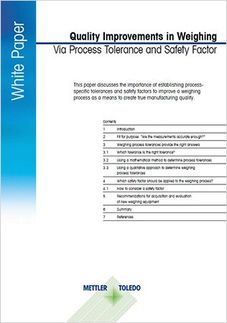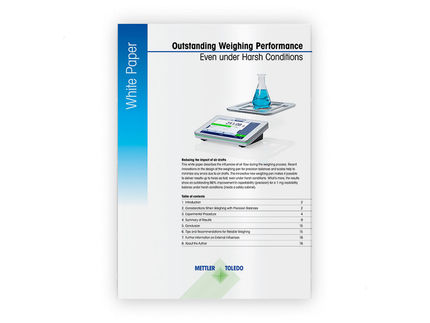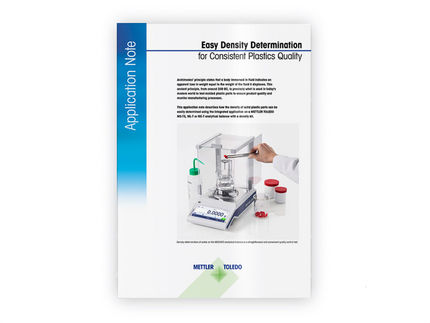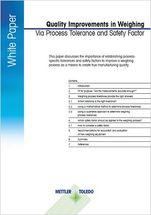
Mettler-Toledo
Quality Improvements in Weighing Via Process Tolerance and Safety Factor

When weighing is used in production, significant quality improvements are made possible by establishing and managing weighing process tolerances, which are secured via the use of a safety factor. Weighing is one of the few measurement methods regulated by government agencies. This is done mainly to ensure that consumers are not cheated when they purchase items by weight (Legal-for-Trade). These regulations date back to the mid-1900s and rely on absolute values displayed on scale indicators (terminals) to set the performance criteria (specifications) for a weighing device.
Modern weighing devices from high quality manufacturers of balances and scales far outperform the minimum standards set forth in the early regulations. Therefore, following these standards as a guideline sets the weighing bar too low by not considering process risks and potential for efficiency and cost savings. The important concern is: Do the end products, or manufactured goods, meet your customer’s high quality standards, and can it be proven?
To avoid mistakes, the best approach is not to rely on weights-and-measures or manufacturers’ specifications as the sole purchase criteria. Instead, consider using your weighing process tolerance to select and operate the right device.
Advertisement
White Paper classification
White papers on related topics
Products on related topics
Manufacturers of similar products
See the theme worlds for related content
Topic world Weighing
Precise weighing is critical in laboratory and industrial environments. From accurate dosing of chemicals for research experiments to mass production of products, precise weight determination is often the first and most critical step. Modern balances and weighing instruments are sophisticated, offer impressive precision and are resilient to external influences such as temperature and humidity.

Topic world Weighing
Precise weighing is critical in laboratory and industrial environments. From accurate dosing of chemicals for research experiments to mass production of products, precise weight determination is often the first and most critical step. Modern balances and weighing instruments are sophisticated, offer impressive precision and are resilient to external influences such as temperature and humidity.










